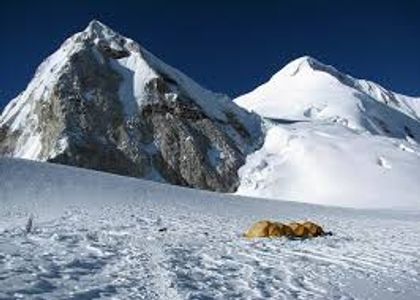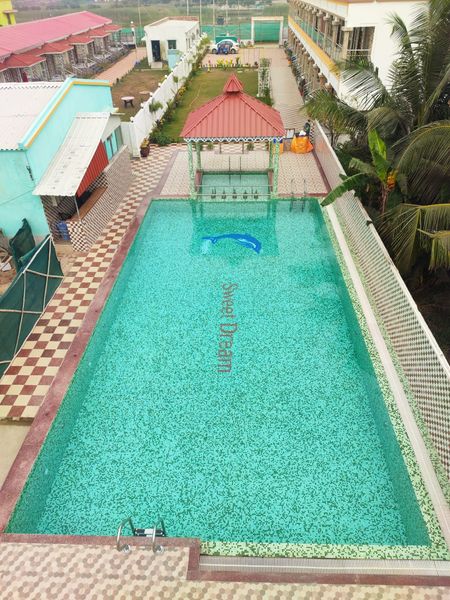Baruntse Expedition: A Technical Gateway to 7000-Meter Peaks in the Himalayas
 Sara Funes
26 May, 2025
9 mins read
64
Sara Funes
26 May, 2025
9 mins read
64

Tucked between Everest and Makalu in eastern Nepal, Baruntse (7,129 meters) is one of the Himalayas’ most striking and underrated peaks. Often overshadowed by the region's 8000-meter giants, Baruntse offers serious mountaineering challenge, dazzling alpine scenery, and fewer crowdsâ€â€making it a compelling objective for climbers aiming to transition from 6000-meter trekking peaks to high-altitude expeditions.
Why Choose Baruntse?
1. A True Mountaineering Experience
Unlike trekking peaks such as Island Peak or Lobuche East, Baruntse is a full expedition requiring advanced mountaineering skills, glacier travel, fixed rope techniques, and strategic camp placements. It offers all the challenges of big-mountain climbing without the extreme altitude of an 8000er.
2. Stunning Views and Remote Wilderness
Baruntse lies deep in the Makalu-Barun National Park, offering commanding views of:
- Mount Everest (8,848.86 m)
- Lhotse (8,516 m)
- Makalu (8,485 m)
- Chamlang (7,319 m)
- Ama Dablam (6,812 m)
The route passes through wild alpine landscapes, turquoise glacial lakes, and some of the most remote and untouched areas in eastern Nepal.
3. Ideal Progression for Aspiring 8000m Climbers
For climbers seeking to gain experience at 7000m, Baruntse is an excellent preparatory peak. It involves technical climbing at altitude, proper acclimatization strategy, and self-sufficiencyâ€â€skills essential for future high-altitude expeditions.
Standard Baruntse Expedition Itinerary (34–36 Days)
Most Baruntse expeditions combine Island Peak climbing or a crossing of Amphu Laptsa Pass, making it a multi-dimensional adventure. Here is a typical itinerary:
- Day 1 and 2: Arrive in Kathmandu and expedition briefing
- Day 3: Fly to Lukla and trek to Chutanga
- Day 4 to9: Cross Zatrawala Pass and trek through Thuli Kharka, Kothe, Thangnak, Khare (possible Island Peak pre-climb)
- Day 10 to 14: Trek to Baruntse Base Camp (5,400m) via Mera La and Seto Pokhari
- Day 15 to 27: Climbing Period for Baruntse
- Set up Camp I (6,000m) and Camp II (6,300m)
- Establish route on the steep 50–70° ice slopes
- Summit attempt with weather window
- Day 28 to 30: Return via Amphu Laptsa Pass to Chhukung (option for EBC extension)
- Day 31 to 34: Trek to Lukla and fly back to Kathmandu
The expedition includes multiple acclimatization days, route fixing, rest periods, and contingency time for summit success.
Climbing Route and Summit Approach
The classic route to Baruntse summit involves:
- Establishing Base Camp at 5,400m, near the pristine Seto Pokhari lake
- Ascending through crevassed glaciers and snow slopes to Camp I
- Negotiating a steep snow and ice face between Camp I and Camp II
- Tackling the technical headwall and summit ridge to reach the peak
The final ascent includes:
- Fixed ropes on 45 degree ice slopes
- Deep snow sections
- Exposed ridgelines
- Potential cornices near the summit
Summit day is long and physically demanding, typically taking 10–12 hours round-trip depending on conditions.
Technical and Physical Requirements
Climbing Baruntse is not suitable for beginners. Participants should have:
Technical Skills:
- Proficiency in crampons, ice axe, harness, and helmet use
- Experience with fixed rope systems (jumar and figure-8 descender)
- Glacier travel and crevasse rescue knowledge (preferred)
- Prior high-altitude experience above 6,000m (Island Peak, Lobuche East, or similar)
Physical Fitness:
- Excellent cardiovascular endurance
- Ability to carry a pack at high altitude
- Capacity for multiple nights in cold, exposed camps above 6,000m
Most climbers undergo 3–6 months of training prior to the expedition, including long hikes, strength training, and altitude simulation if available.
Best Time to Climb Baruntse
Autumn (Late September to Early November)
- Stable weather and excellent visibility
- Cold temperatures but more predictable summit windows
Spring (April to Early May)
- Warmer snow conditions and longer days
- Slightly more precipitation but less wind
Both seasons are viable, but autumn tends to be preferred for big expeditions in eastern Nepal due to fewer storms and less cloud cover.
Permits and Climbing Regulations
Climbing Baruntse requires multiple permits and government liaison coordination:
- Baruntse Expedition Permit (issued by the Ministry of Tourism)
- Makalu-Barun National Park Permit
- Khumbu Pasang Lhamu Rural Municipality Permit
- Garbage Deposit Fee (refundable upon proper waste disposal)
All logistics, permits, and liaison officer arrangements are typically managed by your expedition operator.
Estimated Cost of Baruntse Expedition
The total cost for a professionally guided Baruntse expedition typically ranges from:
- USD 6,500 – 9,000 for a group expedition (shared logistics)
- USD 10,000+ for a customized private climb with Island Peak or Amphu Laptsa extensions
The price includes:
- Domestic flights and land transfers
- All meals and tents during the trek and climb
- Climbing guide(s), Sherpa support, cooks, porters
- Group gear (ropes, snow stakes, tents, stoves)
- Satellite phone or emergency communication
Some premium packages may include pre-expedition training, gear rental, and hotel stays in Kathmandu.
Safety Considerations
Due to its remote location and technical difficulty, Baruntse carries inherent risk. Mitigate these by:
- Climbing with a reputable, licensed expedition operator
- Ensuring proper altitude acclimatization and hydration
- Bringing sufficient personal insurance covering evacuation and high-altitude rescue
- Having access to oxygen support, if needed
- Monitoring weather windows and staying flexible
Baruntse is a serious mountaineering challenge, but also a safer training ground for 8000ers compared to riskier, more exposed peaks.
Conclusion: A Serious Climb for Serious Alpinists
The Baruntse expedition is not a casual trekâ€â€it’s a test of physical stamina, alpine technique, and mental resilience. But for those who rise to the challenge, the rewards are unforgettable: a solitary summit, a sea of Himalayan giants on all sides, and the satisfaction of conquering one of the region’s great 7000-meter peaks.
If you’re ready to take the next step in your mountaineering journey, Baruntse offers a perfect blend of technicality, altitude, and adventure, all set within one of Nepal’s most remote and spectacular landscapes.
window.NREUM||(NREUM={});NREUM.info={"beacon":"bam.nr-data.net","licenseKey":"NRJS-3109bb2e2783f515265","applicationID":"558315209","transactionName":"blUHbEVQCxECBUVQWVcfMEpeHhARBhRCFlRVXwIXVEMAAxcDU1VZXh4VUEc=","queueTime":0,"applicationTime":217,"atts":"QhIEGg1KGB8=","errorBeacon":"bam.nr-data.net","agent":""}
Written By:
Sara Funes



Hotels at your convenience
Now choose your stay according to your preference. From finding a place for your dream destination or a mere weekend getaway to business accommodations or brief stay, we have got you covered. Explore hotels as per your mood.


